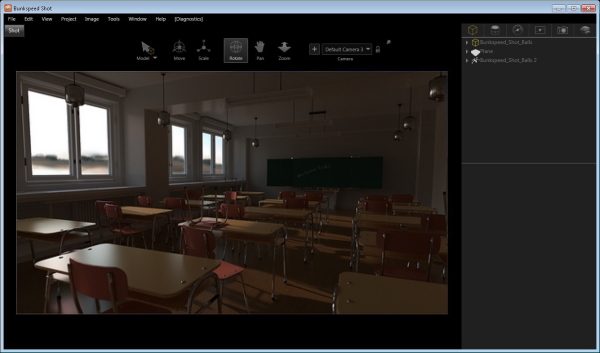Locked away in the Batcave of technology that is Boston Labs we've been having a play with Nvidia's newly launched Maximus technology.
Maximus is a new way of moving particularly intensive calculations from the CPU(s) in your workstation to the GPU(s). This can have a massive benefit to your productivity because the highly parallel architecture of GPUs can process certain calculations far faster than CPUs, which by their nature are general purpose processors.

However, until the advent of Maximus you couldn't carry on working in the foreground effectively while the render was being processed because the operating system was also being rendered by the GPUs. What Maximus provides is the ability to select which GPUs run your computationally intensive applications and which run the operating system.
To see how well Maximus works in practice we built up one of our Venom workstations with a 3.4GHz Intel Core i7-2600K CPU and two GPUs, a Quadro 4000 graphics card and Tesla C2075 processor. For the operating system we used Windows 7 Professional and as a typical example of a workstation application, Bunkspeed Shot, a popular raytracing renderer.

As a baseline, we rendered a single frame of animation on the CPU. However, while the system remained responsive enough for us to keep modelling while the render was being processed, the CPU took a lengthy 29 minutes and 49 seconds to complete.
In comparison, with both GPUs working in parallel, the render completed in a mere four minutes and 58 seconds. However, because both GPUs were processing the render at maximum capacity, there was no processing power left to run Windows or Shot, so we were unable to carry on modelling until the render was complete.
We then enabled Maximus, which forced the rendering engine to run on the Tesla C2075 card only, leaving the CPU and Quadro 4000 free to run Windows and the foreground elements of Shot. This did increase the render time somewhat, up to a total of seven minutes and 19 seconds, but the system was totally responsive during this time, allowing us to carry on working in the foreground.

Conclusion
The massive reduction in render time in Bunkspeed Shot, from just under 30 minutes on the CPU to just over 7 minutes shows that you could be substantially more productive on a workstation that supports Maximus. In short, Maximus means no more waiting around for lengthy renders to complete on your local workstation or fussing around with a network render farm. Instead, you're able to carry on working while your render is being processed seamlessly in the background.
Boston already supplies a wide variety of components that support Maximus and in the near future we'll be launching a range of Maximus-certified Venom workstations - watch this space for more news.
In the meantime, don't forget to join the Nvidia Maximus Technology User Community on Linkedin to see what other people are using the technology for.